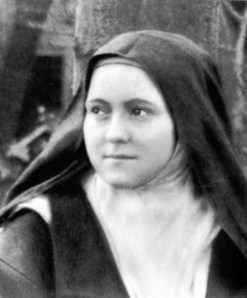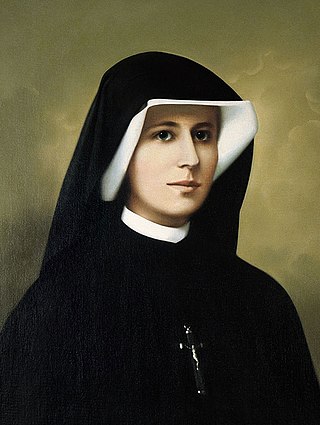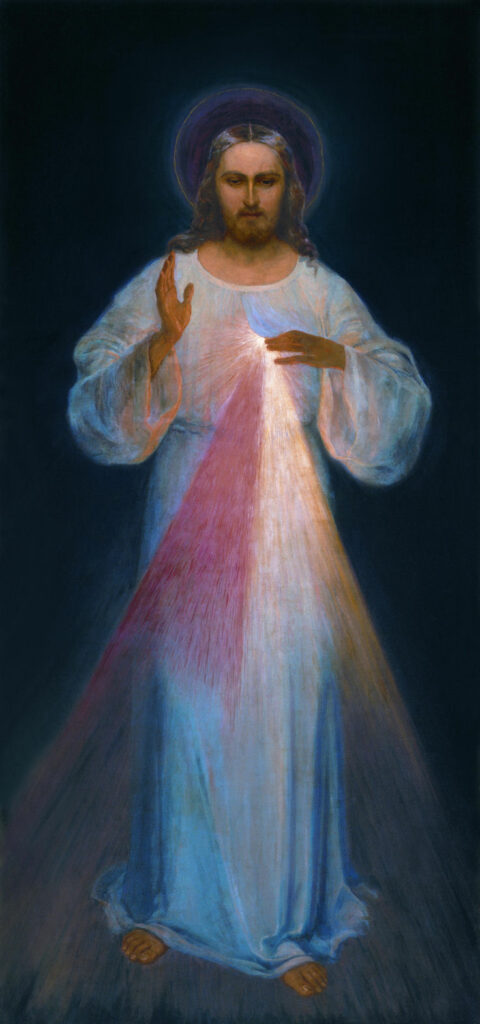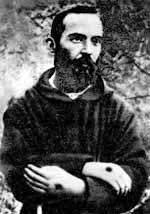Hello Rosary Lovers! In this post we will look at some of the famous saints in the Catholic Church in recent history.
These are some of my favourites, so let’s get to it!
St Therese of the Child Jesus

St Therese has been described by St Pope Pius X as ‘the greatest saint in the modern Church’.
She is also one of the 4 female Doctors of the holy Catholic Church, along with St Teresa of Avila, St Catherine of Siena and St Hildegard of Bingen.
St Therese of the Child Jesus is extremely popular in the Church.
St Therese lost her mother when she was very small (only 4, if I recall). Her relationship with her father was very close. He called her ‘my Queen’. He also is a saint: St Louis Martin.
St Therese longed with all her soul to become a nun. She approached the authorities with this request when she was only 15, but was refused because she was deemed too young. The minimum age was considerably older than this (21, if I recall).
St Therese’s passion went so far as to appeal to Pope himself, Leo XIII. The Pope didn’t grant her request, but encouraged her in her calling.
Eventually, the usual hard-and-fast rules were broken to accomodate this young woman’s fiery determination to become a nun, and she still joined below the minimum age.
Her father was heartbroken, but also happy that she was becoming a nun. St Therese had sisters who also were nuns.
In the convent, St Therese was compelled by divine grace to see her faults regularly. She writes about these all the time in her wonderful spiritual autobiography ‘The Story of a Soul’.
St Therese’s big contribution to the Church is her emphasis on simplicity. When thoughts about God, his ways and what he expected of her seemed too complicated to her, she always fell back on the simple way to God.
This way was, in essence, similar to the relationship she had with her father. God is our Father, and we need only to rely on him with gentle, child-like trust, and not get overwhelmed by thoughts too high for us.
St Therese’s conviction was that simple trust in God was the key to sanctity. At its core, the Catholic life is a simple life, and the more simple we are in our lives and with God, the more Christ-like we are, and the more likely we will become saints.
One example of this is that St Therese said when she felt her soul feeling hungry for God, she would simply recite the Lord’s prayer very slowly, followed by a very slow Hail Mary.
Unfortunately, St Therese didn’t have a long life. She contracted Tuberculosis and experienced a very painful death. The doctor who saw to her said to her fellow nuns: ‘If only you knew how much that young nun is suffering.’
St Therese suffered quietly. She suffered without any complaint.
Her physical sufferings in the last section of her life were accompanied by an onslaught of spiritual sufferings. The Church calls this ‘the dark night of the soul’.
St Therese was tested with great doubts about the existence of heaven and God. In all of this, she held onto faith, but she lost her joy and peace that she had known for most of her life in Christ.
She died in 1897 at the very young age of 24.
She was so popular following her death that she was unusually canonised very quickly in 1925 by Pope Pius XI. This speed of canonisation is not normal in the Church.
St Faustina

St Faustina was a nun in the early 20th century. She is the founder of the very popular Catholic devotion the Divine Mercy Chaplet.
She is also the inspiration behind Divine Mercy Sunday, a very important feast day in the Catholic Church, since it is always the first Sunday after Easter.
As such, she is regarded by the Church as the ‘Apostle of Divine Mercy’. Her one goal in life was the declare the unlimited mercy of God in Jesus Christ to sinners.
St Faustina was called to the monastic life and many of her inner thoughts and prayers are recorded in her outstanding spiritual autobiography ‘Divine Mercy in My Soul’.
Reading this amazing book, it’s not hard to see why St Faustina is one of the greatest saints of recent Catholic history.
St Faustina was visited with private revelations from Jesus. The most important of these visitations was his revelation to her of his Divine Mercy image.
According to the saint, Jesus told her to get an image painted of the very image she had seen. We have this image today in the Church, painted in two forms. You can find these on the internet. One is below.

Jesus apparently told the saint that all who venerate this image will be saved.
St Faustina was a highly introspective saint. She underwent great trials regarding whether the revelations she was experiencing were really Jesus or not.
Many fellow nuns thought she was not seeing Jesus. St Faustina even went to a number of priests for confession who discredited her experiences of Jesus.
These all had a huge impact on the saint, as she had to battle inside her love for and obedience to the Church authorities, whilst being unable to deny that these experiences were very, very real.
Eventually, she said to Jesus: ‘Although I will not ever believe that your visits and words to me are from any other source other than you, I will go one final time to confession about this issue. Whatever the priest says, I will obey.’
As it happened, the particular priest she went to believed St Faustina’s experiences. She was commanded by this priest to write down her spiritual experiences, and also to seek out a painter for the Divine Mercy image that Jesus had commanded her to paint.
Jesus also told her that she would be the inspiration for the establishing of a great Divine Mercy feast in the Church.
St Faustina’s life shows us that full obedience to the Church is always the way to God, no matter what the Church requires of us. It is not enough to have powerful experiences of Jesus in our own lives; we need the Church to support these experiences.
St Faustina died at 33, in 1938.
The path of the Divine Mercy devotion was not an easy one in the Church. For a good while, following the saint’s death, the Church authorities banned the devotion and St Faustina’s autobiography. This was due to a faulty translation of her material.
Eventually, however, the Church saw the glory of St Faustina’s life. Her path to sainthood was then swift. She was beatified in 1993, and declared a saint in 2000. She was the first saint canonised in the new millennium.
St Padre Pio

Arguably one of the greatest saints in the entire history of Christianity, St Padre Pio’s life beggars belief.
From an early age, visions and revelations of Jesus and Mary and the spiritual world – such as demons – were commonplace to him. The saint was amazed that such experiences were the norm for most Christians.
Called to the monastic life, St Padre Pio was tormented day and night by extremely poor physical health and spiritual onslaughts. Often his fellow monks would be terrified to hear awful noises coming from his cell above them. The saint claimed demonic forces were attacking him.
The miracles of St Padre Pio are astounding, and would probably be unbelievable if they had not occurred so recently, and if there were not so many eye-witnesses and testimonies, including medical records.
For instance, the saint could appear in two places at once. He could levitate. He could survive vast increases in body heat which are medically impossible. He would visit fighter pilots in the sky. He would read people’s minds in Confession, and declare to them all their sins, even those they had long forgotten.
Not to mention perhaps his most famous miracle, that he is the only recorded priest in the history of the Church to have had the stigmata, the very wounds of Christ on his body.
These wounds were on his body continuously for 50 years. They were open wounds, and were examined by a number of experts.
Shockingly, just before he died, they completely healed up and left no trace at all.
The saint found these wounds a great humiliation, and did not want them. They were very painful.
St Padre Pio was opposed by the Church authorities for most of his life. Many of the hierarchy were deeply concerned about him, and believed he could very well be a deceived soul who was a danger to Catholics.
He was banned from saying Mass in public for many years, and was only allowed to hear confessions.
Most of his life was spent in his cell, as he wasn’t allowed in public. He used this time to pray up to 50 rosaries a day.
During his life, the saint was almost worshipped by Catholics all over the world. So many had had their lives changed forever by either meeting him, or because he visited them in a dream.
Following his death, his following did not die down, and eventually under the Papacy of St John Paul II (who had been a big admirer of the saint), the path was set for his canonisation.
The miracle St Padre Pio performed from heaven to verify his canonisation is incredible. He visited a young boy who had no chance of survival from a deadly illness.
When the boy regained full consciousness, he told everyone that an old man with a beard in brown clothes had visited him and told him he would get well.
This is the exact description of St Padre Pio. The Church had no option but to declare him a saint following this.
If you have enjoyed this post, please leave a comment! God bless!